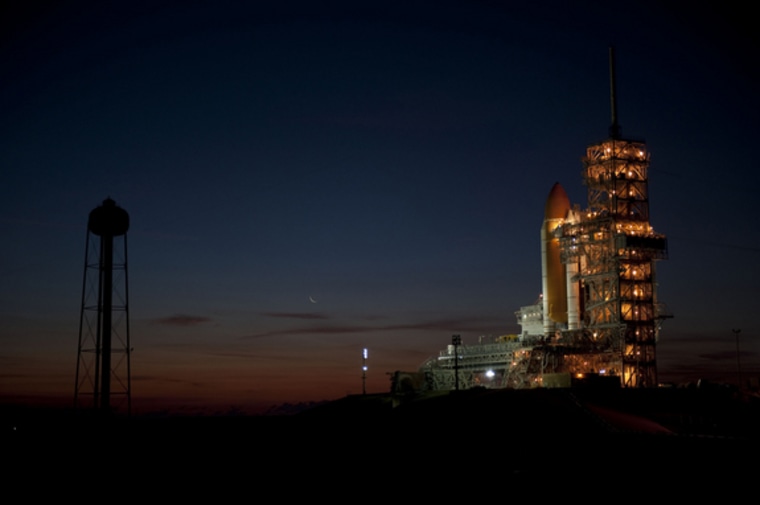NASA will try next week to launch space shuttle Discovery on its final voyage following a four-month delay for fuel tank repairs.
Liftoff is set for late Thursday afternoon. Senior managers voted unanimously Friday on the new launch date after discussing the fixes made since the shuttle's grounding in early November.
Cracks in the external fuel tank were discovered after a launch attempt was foiled by leaking hydrogen gas. It's taken this long to understand and repair the cracking, which could have harmed the shuttle during liftoff.
The shuttle will carry six astronauts and a humanoid robot, along with a full load of supplies, to the International Space Station. One of the human crew is a substitute, replacing an astronaut who was injured last month in a bicycle crash.
Astronaut Timothy Kopra helped train his fill-in after he stepped down and was instrumental in keeping the flight on track, officials said. He was supposed to be the lead spacewalker.
NASA opted for a Thursday liftoff at 4:50 p.m., even though a European cargo vessel will be docking at the space station that morning. Officials normally prefer more time between arriving spacecraft, but they want to get Discovery flying as soon as possible given its lengthy delay.
The shuttle launch will be put off if anything goes wrong with the docking of the European freighter.
As for the cracks in Discovery's external fuel tank, engineers traced the problem to inferior material combined with assembly issues. The cracking was confined to some of the aluminum alloy struts in the center of the tank, which holds instruments but no fuel. The damaged struts were patched, and the others reinforced as a precaution.
NASA worried that the underlying cracks could have caused foam insulation to break off the tank and slam into Discovery, as it did during Columbia's doomed mission in 2003.
Another problem cropped up last week: A measuring gauge broke at the launch pad, and one of the falling pieces gouged a tiny slit in the fuel tank foam. No repairs were necessary because of the location on the bottom back side of the tank.
This will represent the end of Discovery's flying career. NASA is retiring the three remaining shuttles this year, leaving orbital trips to private companies so it can focus on interplanetary travel. Until the private sector can take over crew hauls, NASA will have to pay millions of dollars to Russia for astronaut trips to and from the space station.
